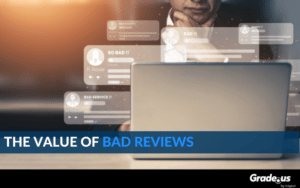Updated: 1/20/2020
"I found a rusty screw in my food."
A TripAdvisor customer shared her horror story. She went out for dinner with her boyfriend. She orders a baked potato. It comes out cold and hard. She sends it back discreetly. They make her another baked potato. She takes a big bite and...
Crunch!
She bites down on a large rusty screw. Naturally, she decides to leave.
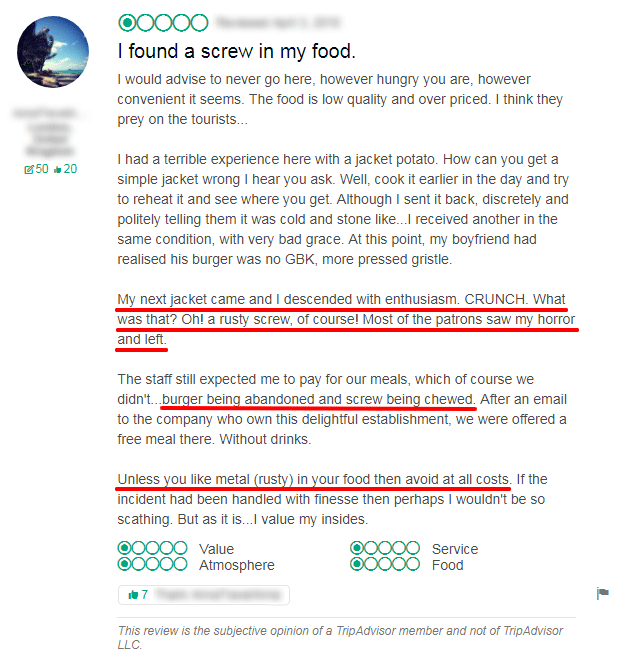
Can you blame her?
Her review is devastating. There's simply no way to come back from a review like this. There's no way to turn this around. It's just too much.
Or is it?
How do you turn negative reviews into positive reviews?
You focus on motive.
Customers write reviews for a reason. Understanding the motivation behind a customer's negative review is key. Motive shows you how to turn a negative review into a positive one. Turn an unhappy customer into a lifelong customer.
But only if you learn the rules.
Reviews follow a specific set of rules. It's the same set of rules governing social dynamics. That seems simple enough until you realize most people don't know the rules.
They think they do.
In fact, most people won't admit that they don't know the rules.
Organizations tend to respond to negative reviews in predictable and irrational ways. A customer leaves a negative review about rusty metal in their food. The restaurant in question ignores the review. Because what are you going to say? It's a humiliating and embarrassing mistake.
Or worse, the organization in question decides to respond.
They respond with empty phrases like "we're so sorry you had a bad experience" or "we were saddened to hear you were dissatisfied." They use staff proxies to pick fights with customers - yelling, arguing, complaining or whining.
Organizations make it all about them.
Angry customers want you to make it about them
They expect you to follow the rules. To look at their situation, intuit their motive and own the problem. Not to bargain, to save face, or to deny what's happening. They don't want you to stonewall them. They're not looking for criticism or condemnation.
They're looking for ownership.
If you're like most people, that's the last thing you want to do. Accepting the blame can come with terrible consequences - job loss, lawsuits, fines.
Owning the problem is dangerous.
If it's handled well, it doesn't have to be. The first step is understanding, accepting and owning the reality of your situation. If you want to convert a negative review into a positive one, you'll need to accept a simple truth.
Some customers won't forgive you.
Some customers will hold you responsible for things you can't (or shouldn't fix). Some of the mistakes you make will create customer enemies. They'll look for ways to maximize the amount of damage they do to you and your organization.
Minimize the damage by prioritizing negative reviews
Negative reviews aren't created equal. Respond to the wrong negative review and you inflame the situation, motivating customers to make the problem worse.
Ignore negative reviews completely and the damage done to your business becomes permanent. Prospective customers read these reviews then decide to take their business elsewhere.
Which negative reviews do you respond to? The negative reviews with the right motives behind them.
1. Vengeful. These customers want to punish you. They're angry and they want to do as much damage to your business as possible. A scathing review is an easy, low-risk way to accomplish that. Typically, these customers aren't looking for justice or reconciliation. They're looking for destruction. Ragers, sadists and trolls are typically focused on vengeance.
2. Altruists. These reviewers are looking to share their honest feedback and experience with potential customers, giving them clear feedback they can use to make an informed decision. An altruist's review can be either positive or negative.
3. Advice seekers. Something's gone wrong. This customer has had a bad experience with your business. They're using their review to ask for help or advice. Instead of coming to you directly, they approach other reviewers, customers (usually part of a community) to request help. This negative review is the most devastating because it allows a potential customer's imagination to run wild as they mentally try to fill in the blanks.
4. Doubters. A customer has signed on the dotted line. But they're feeling buyer's remorse. They're nervous, concerned they've made a mistake. A seemingly insignificant problem has ballooned in their mind to an insurmountable disaster. Their negative review is a form of catharsis, a way to relieve the cognitive dissonance that's fueling their doubt.
5. The Fearful. These customers are highly agreeable. They're terrified of conflict, so there's almost no chance they'll be open or honest with you. These customers will smile, tell you everything is fine, then post a demoralizing review (anonymously) when they get home. They're unfairly characterized as cowards, but it's more accurate to say they're conflict-averse.
6. The Standard-bearer. The negative review of a loyalist or engaged customer. They know exactly how things are supposed to be. They're unhappy that you've fallen short of your own standard or ideal and they're going to let you know. What makes this customer's negative review different from all the other types? This customer is looking for restoration. want you to fix the problem so they can continue to have a happy relationship with you.
Even more complicated, each of these attributes can be present in a single customer. You'll need to know who and what you're dealing with.
Now, how are you supposed to do that?
Simple.
You look at their words. Your customer's review tells you who they are. Their goal isn't to hurt you directly by yelling at you. It's to hurt you indirectly by isolating you from other customers.
Vengeful customers use language that's abusive, manipulative or demeaning. They want maximum damage.
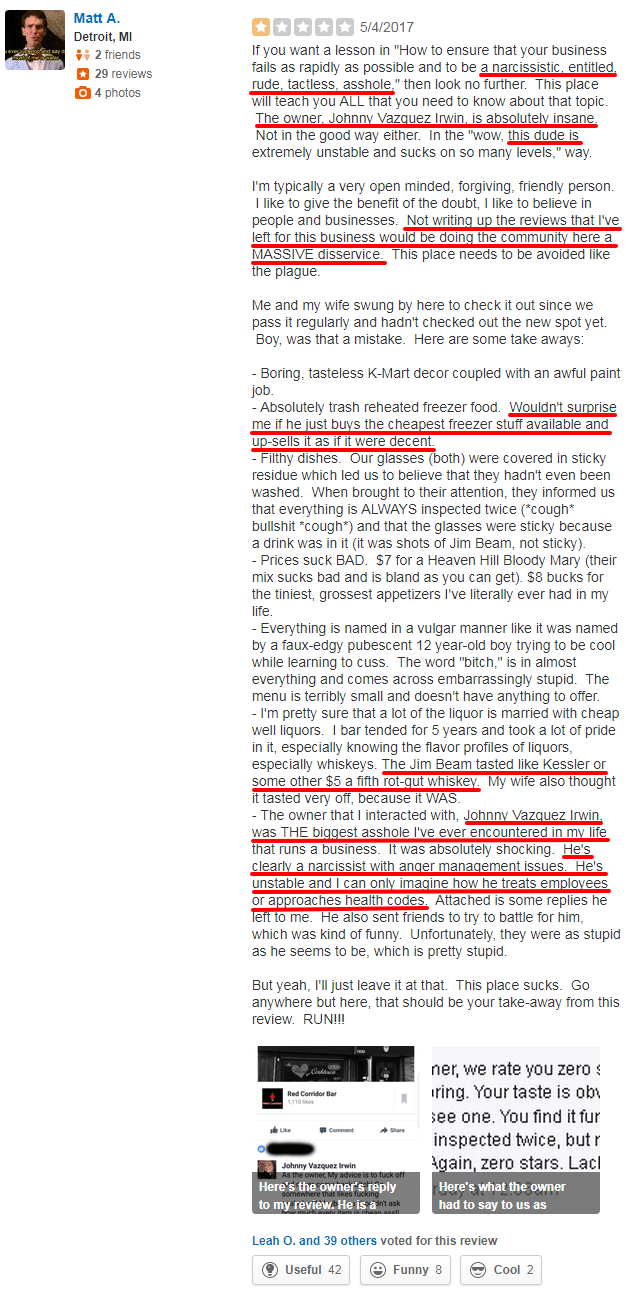
Altruists stick to the facts and reality of the situation, doing their best to be as helpful and informative as possible.

Advice seekers ask for feedback and advice. Obvious right? This is more prevalent on established communities and informal review sites like Reddit or Quora.
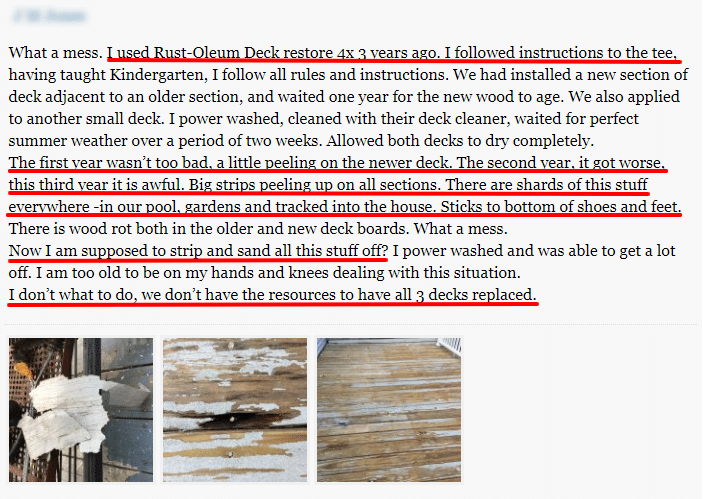
Doubters display internal or external conflict. Buyer's remorse, concern they've made a mistake or hit the point of no return is often present.
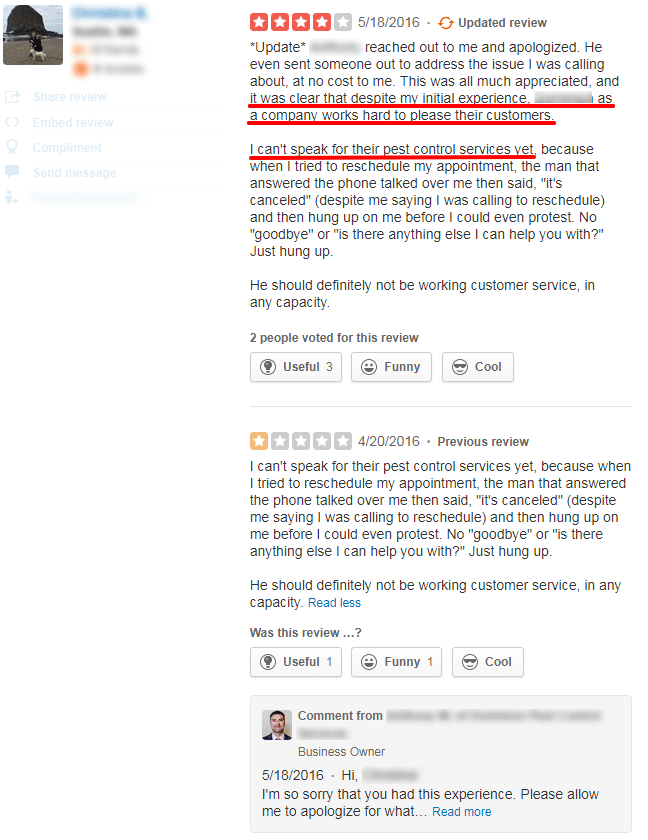
Fearful customers use language that displays fear. The variants of fear - insecurity, anxiety, doubt - can be expressed differently, but the root emotion is the same.
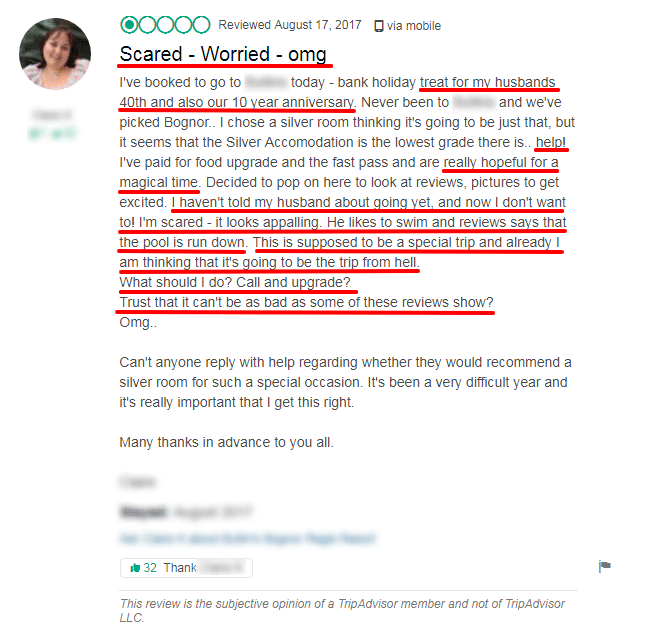
The standard-bearer emphases the past and how things are supposed to be. They use strong past-positive/past-negative language "they used to be better than this" or "when they first started they treated customers with more respect" etc.
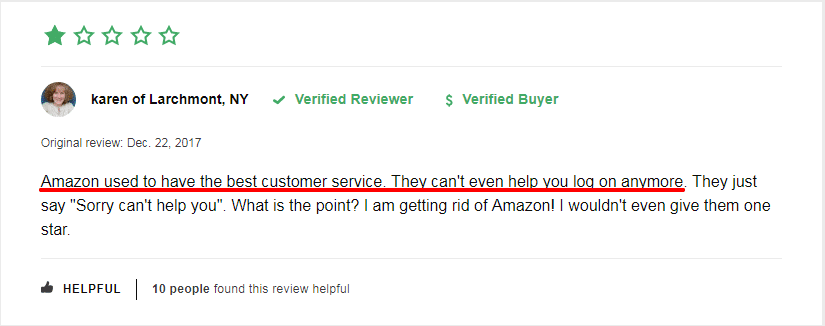
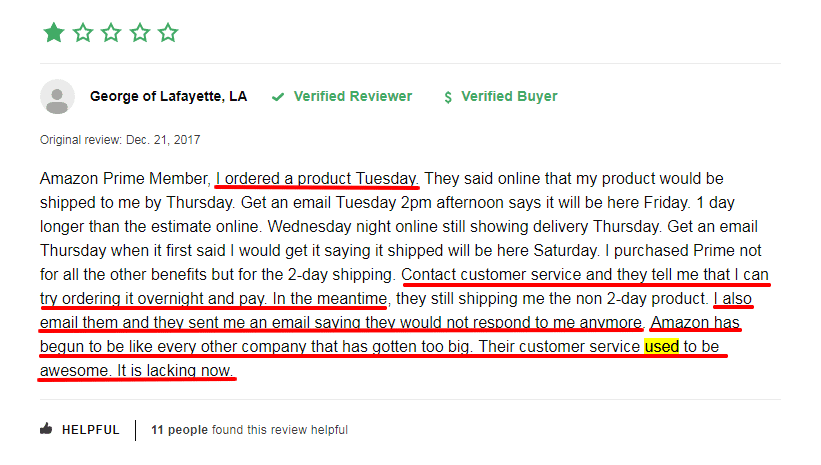
These differences expose a serious problem.
Online Review Generation Can Be Tricky
Grade.us can help. Start your 14 day free trial today!
Get StartedSavvy organizations know a one-size-fits-all approach doesn't work
Customers these days are sophisticated. Think about it. You know when a company is trying to "take the conversation offline" to avoid potential embarrassment. You know when they're feeding you a bunch of glittering generalities (e.g. we value our customers, satisfaction guaranteed) and empty platitudes.
Okay.
A one-size-fits-all response to a negative review is less likely to produce the results you want.
What's the alternative then?
You solve the puzzle. You create a response that's tailored to the customer and their situation. These are the kinds of responses that fit. These responses tell your customers (a.) you empathize with them and you're paying attention (b.) you're working to fix the problem and (c.) making sure the mistake never happens again.
Don't even think about asking to adjust their review until you've done A, B and C.
Your goal, with every legitimate negative review, should be to woo your customers back into a relationship. You want them to know you're deeply committed to them and that you've solved their problem.
Done? Good.
You're ready for the ask. What's the right way to do it? And when do you go about doing it? If you've completed A, B and C your next question, in your own words, should be:
I want to make sure you're happy. Is there anything else I can do to make things right?
This question is frightening because it displays vulnerability. You've put yourself in a position of weakness and your customer in a position of power. What if customers take advantage of you? It's a legitimate fear but this question is important all the same.
Because it gives power to the powerless (your customer).
This is what it takes to restore the relationship. Your client needs to see and understand that you value them and the relationship. Customers are inherently dependent and vulnerable. A violation of that trust requires restoration. Something power provides.
The ask comes when customers are back to zero
Zero meaning neutral.
Ideally we want customers to be happy. It's preferable that they're happy. But neutrality is the next best thing. You've done the upfront work needed to restore the relationship. You're ready to ask them to adjust their negative review.
How exactly do you do that?
You use their response as a guide. Their negative review and their choice of words tell you a few things.
1. Whether you should ask this particular customer to update their review at all.
2. How to approach them.
3. And what to say when you approach.
Here's how you do it.
Vengeful customers
Vengeful customers are often consumed by anger, bitterness and resentment. Some customers are ragers, trolls or sadists who take pleasure in hurting others.
Verdict?
Leave them alone. These customers aren't interested in anything you have to say. Anything you say feeds their volatile emotions and inappropriate behavior. Silence is the only thing that gets them to move on.
Altruistic customers
Altruists are looking out for others. They're sharing their experience with the community around them. Bring this up when you ask them to adjust their review, like this:
Hi [Reviewer Name],
I'm so sorry again that we screwed up your order last week. I wanted to let you know that I really appreciate you giving us an opportunity to make things right.
When I look at your reviews on Yelp, I see that you're always looking out for everyone else. Your reviews are fair, balanced and factual. Your first review outlining our mistake was right on the money and completely fair. Would you be willing to share an update now that we've resolved things?
You've been so good to us.
[Your Signature]P.S. No worries if you can't.
Advice seekers
These customers are looking for feedback on a bad situation. If you've done A, B and C, as I described earlier, these customers should be happy(ish). Here's how you ask:
Hi [Reviewer Name],
You were right to ask for advice in your review. We really dropped the ball back there. I'm so sorry for that. Thanks so much for giving us the chance to make things right again.
You didn't have to let us know about the problem, but you did. Sure it's bad news, but sharing that was incredibly generous of you. I'm grateful for that. Would you be willing to do it again?
Would you be willing to update your review now that we've fixed the problem?
If not, no worries.
We're thankful for you either way!
[Your Signature]There's an acknowledgment of their review and the comments they made. It shows that not only are you not angry with them you actually agree with them! Even more amazing, you're thankful for their review.
Doubters
Doubters need reassurance. They need to know you've got their back, that you're willing to make things right, even when it hurts.
Hi [Reviewer Name],
After seeing your review, I realized we made a huge mistake. We sold you on a service you weren’t entirely familiar or comfortable with. No wonder you felt rushed and pressured.
I’m so sorry.
Thanks for giving us the chance to turn things around. You’ve been generous and patient with us and I really appreciate it.
Some people over at Yelp are interested in hearing the rest of your story. Would you be willing to share an update on how things are going?
We love you either way!
[Your Signature]Fearful customers
These customers hate conflict. They do everything they can to avoid it. It's bad enough for some customers that they'll refuse to read your message. Your subject lines, message intros and tone should communicate acceptance.
Hi [Reviewer Name],
You’re right. In your review, you mentioned we made three big mistakes. Then to top it off, we handled it poorly. We scolded you for holding us accountable.
I am so sorry.
You’re absolutely right. Our manager wasn’t following policy when he removed items that should have been included in your order. Thanks so much for catching that, challenging him and holding us accountable.
You’re our rock.
We were able to put things back to the way they should be, all thanks to you. Would you be willing to share the rest of your story or update your review?
Sure, it helps us out, but it also shows you were right.
Thanks either way.
[Your Signature]Acceptance gives your customers the confidence they need to come to you in the future. It makes them stronger.
Standard-bearer
These customers are loyal truth-tellers. They love you enough to tell the truth about your business and their experience. Even if it's painful. Here's how you ask them to update their review:
Thank you, [Reviewer Name],
We got it wrong, but you saved the day. It’s always uncomfortable sharing your story. You never know how it’ll be received. Your review helped us avoid another potential disaster.
I appreciate you taking the time to let us know.
Here’s a short summary of the changes we’ve made based on your feedback.
[concise summary of changes]Would you be willing to share an update on your story? It would give other customers some much-needed peace of mind.
We love you either way!
[Your Signature]These responses depend on two crucial ingredients: sincerity and specificity. Customers recognize genuineness and honesty. Don't say these words if you don't mean it.
Your customers will know.
Don't bother approaching your customers with any request if you haven't bothered to fix their problems. If you've made a mistake, own it. Do your very best to underpromise and overdeliver. Do it from the standpoint of righting a wrong.
Don't allow selfishness to creep in.
This isn't about keeping your customer's business. It's about righting a wrong. Make that your primary motivation. Your motives determine how customers respond. Approach customers with the wrong motive and your presence changes.
It trickles down to your staff.
It's something that's conveyed non-verbally.
What if you can't admit wrongdoing to your customers?
What if admitting to "wrongdoing," creates a serious legal problem for your business?
It's a legitimate concern.
NPR was matter-of-fact about this trend.
Sonari Glinton: Here's a lesson we've all probably learned from our parents: When you're wrong, say you're sorry; fess up, admit it. These are toddler lessons - "Sesame Street," "Mister Rogers." So why do companies and CEOs so rarely admit that they screwed up?
Katherine Philips: My cynical answer is, the lawyers won't let them.
Glinton: Katherine Philips is a professor of leadership and ethics at Columbia's business school. She says one of the main reasons companies like JPMorgan don't usually admit to wrongdoing, is because that will open them to crushing liabilities from plaintiff's lawyers.
If you admit to wrongdoing, there's a chance you'll be punished for it (legally, financially, socially, etc.). If you own your mistakes, they could destroy you.
How do you respond?
There are several ways you can address this problem. You'll want to verify these options with legal before rolling them out. Here's another thing to keep in mind. These responses tend to operate on a spectrum.
Let's take a look.
Focus on your customer's experience.
I'm so sorry.
You expected [expectation], but you received [reality] instead. It makes sense that you're frustrated.
[Support Manager Name], our [Support Manager Title], would like to address your issue personally.What's the best way for him to get in touch?
Please let me know,
[Your Signature]Here's another template you can use:
Offer specificity to your customers.
That's frustrating.
I'm sorry you didn't get what you were looking for.
[Support Manager Name], our [Support Manager Title], would like to address your issue personally. Would you be open to that?If so, what's the best way to get in touch?
Please let me know,
[Your Signature]I'm sorry this happened.
You definitely don't deserve to be treated this way. We should have:
[outline action steps]We want to take action on this asap.
I've forwarded your issue to
[Support Manager Name], our [Support Manager Title]. [He/she]'d like to address your issue personally.What's the best way to get in touch?
Please let me know,
[Your Signature]Provide restitution to customers.
I'm sorry this happened.
I want to make sure you're taken care of (as you deserve to be). I'd like to make sure we [replace/redo] this for you.
What's the best way to get in touch?
Please let me know,
[Your Signature]Give customers clarity about their situation.
I'm so sorry for the confusion.
I've reached out to [Support Manager Name], our [Support Manager Title]. We want to make sure there's no confusion in the future.
Here's what should have happened:
[very concise list of procedures/protocols]We'd like to [compensate] you for your inconvenience. What's the best way to get in touch?
[Your Signature]Why these particular templates?
Miriam Ellis shared research outlining the scenarios that lead to customers updating a negative review.
Key to review transformation:
- 70% mentioned poor service/rude service rectified by a second experience in which staff demonstrated caring.
- 64% mentioned the owner/manager/staff proactively, directly reached out to the customer with a remedy.
- 32% mentioned item replaced or job re-done for free.
- 20% mentioned customers decided to give a business a second chance on their own and was better-pleased by a second experience.
- 6% mentioned customers realized the fault for a misunderstanding was theirs.
Ellis also mentioned GatherUp's study demonstrating that 57% of complaints revolve around customer service or employee behavior. The majority of negative reviews revolve around people problems.
Yikes.
There's a silver lining here. If customers listen or respond to your message, they're giving you a second chance.
What does this mean?
You focus your attention exclusively on making amends for your mistake. This approach means you're focused on your customers. It also means you aren't:
- Doing the bare minimum then asking for customers to update their review. They’ll spot this a mile away and it may earn you another negative review.
- Trying to turn reviewers into customers again. Doing that makes their horrible experience about you. It’s selfish, inappropriate and an immediate turnoff.
- Attempting to upsell reviewers, offering them another product or service. That’s a smarmy, gross and unethical thing to do. Don’t do it.
- Fixing reviewer complaints so they’ll change their review. This isn’t the same thing as simply working to make amends or fix a problem. Customers can tell the difference. When brands make this mistake, it’s a turnoff.
Here's the problem.
This is actually what you want. You want unhappy customers to update their negative reviews. If you get it, that's great news. However, if you don't get this, you'll need to be okay with that outcome.
Why accept that?
Can you dictate or control how a friend or significant other responds to the end of the relationship with you? Not at all. Many people try to do that, but it's that response is in the hands of your ex.
It's the same here.
Do everything in your power to behave as if the relationship is still on the very best of terms, that you're willing to do right by each customer, even if they don't deserve it. Have you done that already? Here's how you identify when it's time to ask for an updated review.
1. You've responded to the negative review in a timely fashion
2. Your customer feels validated, heard or have responded favorably to your response
3. You've made amends or provided full restitution
4. Your customer is satisfied, the relationship is back to neutral or happy
Have you met all four of these criteria?
Great.
It's safe for you to ask for an updated review. The negative review that was previously costing you business will now help you bring in new business.
Take the time to customize these templates.
You're going to want to verify things with legal, ensuring that this doesn't expose you to any liabilities or disasters.
Asking an unhappy customer to "adjust" their review is a disaster waiting to happen
Some disasters can't be undone. You can't use these strategies to deal with every single review. If you've made a serious mistake, there's no amount of adjustment or massaging that will eliminate the problem.
No amount of spin can save you.
If that's true, how can you ask customers to adjust their negative review? Won't that blow up in your face?
Nope.
How do I know? The Overton Window.
The Overton Window outlines the range of what's considered acceptable. Ideas that fit within this window are topics or discussion points people find acceptable. Ideas outside the Overton Window are unacceptable.

Your industry has an Overton Window. Mistakes you can come back from and mistakes you can't. It's your job to get a clear idea of what's acceptable to your customers. How do you do that? You ask. You watch the activity in the marketplace.
The vast majority of your mistakes fit inside the Overton Window.
You can recover from most mistakes. Make those mistakes worse, turn them into a character, moral or ethical issue and you move outside the Overton Window. Respond appropriately and you have a chance.
You can't turn negative reviews into positive ones
This is the attitude many organizations take.
But they're wrong.
You can come back from a rusty screw in your baked potato; you can come back from poo in the kettle. These businesses made major mistakes. But they survived.
Lie about it, hide bad behavior, shift yourself outside the Overton window and recovery becomes impossible. Converting a damaging review to a positive one is doable but it requires caution.
That said, negative reviews don't have to become a disaster.
Focus on motive, lead with action, own your mistakes. It's the key to recovery. You convert an unpleasant customer experience into a perpetual win.
But only if you learn the rules.
About the Author
Andrew McDermott
Andrew McDermott is the co-founder of HooktoWin. He shows entrepreneurs how to attract and win new customers.





